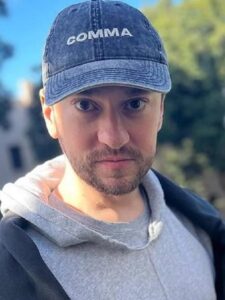
George Hotz Biography
George Francis Hotz, alias Geohot, was born on October 2, 1989, and is an American security hacker, entrepreneur, and software engineer. He is well-known for creating iOS jailbreaks, reverse engineering the PlayStation 3, and the accompanying Sony litigation. He has been working on his automotive automation machine learning business comma.ai since September 2015. Hotz has been working on tinygrad, a deep learning system, since November 2022.
George Hotz Age
George Hotz was born on October 2, 1989. He is 34 years old.
George Hotz Height
George Hotz stands at a moderate height of 1.63m, and he weighs 83kg.
George Hotz Education
He attended the Bergen County Academies’ Academy for Engineering and Design Technology, a magnet public high school in Hackensack, New Jersey. Hotz is a graduate of the Johns Hopkins Center for Talented Youth. Hotz also attended Rochester Institute of Technology and Carnegie Mellon University for a short time.
George Hotz Wife
George Hotz is single and happy with his life. To prevent unwanted public attention, he likes to keep his personal life private. He is more interested in his work than in drawing attention to himself.
George Hotz’s Net worth
As of November 2023, George Hotz’s net worth is believed to be over $6 million, which he acquired while working as an American hacker. He is employed by the company Comma.ai and is paid monthly. He has not disclosed his specific pay figures.
George Hotz Career
Hotz was able to supplement his salary by soliciting public donations for his security exploits. Between May 2011 and January 2012, Hotz worked at Facebook.Google hired Hotz on July 16, 2014, to work with the Project Zero team, where he created Qira, a tool for dynamically analyzing application binaries.
From January to July 2015, Hotz worked at the startup Vicarious. Hotz revealed on November 18, 2022, that he has been employed by Twitter for a 12-week internship. He resigned on December 20, after less than 5 weeks on the job.
In September 2015, Hotz launched his AI firm, comma.ai. Hotz said in an interview with Bloomberg that the company was developing automotive automation technologies based on machine learning algorithms. Hotz created a working self-driving 2016 Acura ILX, which he displayed in a video on California’s Interstate 280 freeway, earning him a cease and desist notice from the California Department of Motor Vehicles.
Hotz met with Tesla Motors CEO Elon Musk to discuss selling his technology. Hotz claimed that Musk offered him $12 million (minus $1 million for each month Hotz worked on the task) to develop a driving system that might replace Tesla’s MobilEye solution at the time, which Musk denied. In a December 2015 interview, Musk offered guidance on Hotz’s self-driving car project.
The National Highway Traffic Safety Administration (NHTSA) alerted Hotz on October 27, 2016, that the product was legally obliged to meet with Federal Motor Vehicle Safety Standards and demanded information to confirm such compliance. A day later, from Shenzhen, George Hotz tweeted that the comma one had been canceled. On Jalopnik, Kristen Lee noted that the NHTSA was only attempting to create a dialogue, adding, “Instead, they got the worst attitude possible from Silicon Valley: try and regulate us, thought leaders, and we’ll take our ball and go home.”
On September 14, 2018, comma.ai stated that Hotz would be the project’s Head of the Research Team and that Riccardo Biasini would be the company’s new CEO. He departed in March 2019 but returned in May 2019 to resume his presidency.
comma.ai introduced its $999 comma two ADAS (driver-assist) device at the annual CES innovation conference in Las Vegas on January 7, 2020. Sucxess LLC, a “patent troll”, sued comma.ai on August 23, 2022. Hotz announced his departure from comma.ai on October 31, 2022.
On November 5, 2022, Hotz established Little Corp. The goal of the tiny company is to move machine learning instruction sets to hardware accelerators.
On May 24, 2023, Tiny Corp stated that they had raised $5.1M to build machine learning systems and a neural network framework called tinygrad. Tinygrad, Tiny Corp’s neural network framework, tries to strike a balance between the simplicity of Andrej Karpathy’s microgrid framework and the capability of PyTorch. tinygrad aims to outperform PyTorch in terms of performance through a variety of optimizations such as dynamic compilation, operation fusion, and a considerably simpler backend. Currently, tiny grad is used to allow comma.ai’s open pilot framework to function on the company’s dedicated hardware, which includes a Snapdragon 845 GPU.
Tiny company also creates the TinyBox, a $15,000 AI computer designed for local model training and inference and operating as a personal compute cluster.